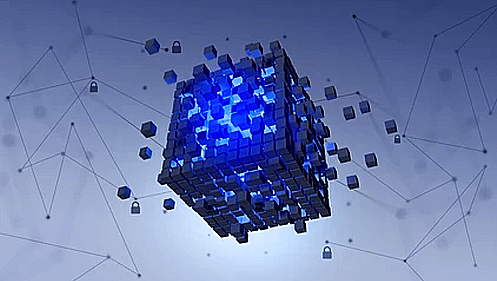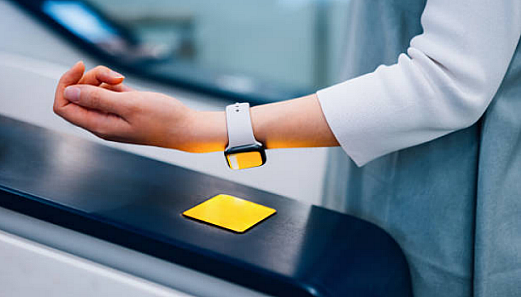Accredited InvestorsAltcoinAnatoli UnitskyAnti-Money Laundering (AML) In CryptoAPIArbitrageArtCoin TokenArticle DirectoryASICAuction Terminology GlossaryBasics of Stock Market InvestingBear MarketBest Crypto Payment Provider In the WorldBitcoinBlockchainBlockchain ConfirmationBlockchain Consensus MechanismBlockchain ForkBlockchain GlossaryBored Ape Yacht ClubBuild a Business That OutperformsBull MarketBuying SkyWay SharesByzantine Fault Tolerance (BFT) ExplainedCasascius CoinCentral Bank Digital Currency (CBDC)Centralized Crypto ExchangeCoinCoinsetCold WalletCollateralCommodity Futures Trading Commission (CFTC)Cross-Chain TechnologyCRUCrypto ExchangeCrypto GlossaryCrypto JokesCrypto Terms to KnowCrypto TickerCryptocurrencyCryptographyCryptojackingCryptounit BlockchainCryptounit GlossaryCryptounit ProgramdApp (Decentralized Application)Dead CoinDecentralized Exchange (DEX)Decentralized Finance (DeFi)Difference Between Bitcoin and EthereumDifferent Ways of Investing MoneyDigital CurrencyDistributed LedgerDo Your Own Research (DYOR)Dollar Cost Averaging (DCA)Dow Jones Industrial Average (DJIA)EncryptionERC-20ERC-721EthereumEvoScentFear Of Missing Out (FOMO)Fear, Uncertainty and Doubt (FUD)Fiat MoneyFNT Fintech CompanyGenesis BlockGlobal Unit PayGlossary of Banking TermsGlossary of Business TermsGlossary of Financial TermsHalvingHODLHot WalletHow Do I Start InvestingHow Rich is Satoshi Nakamoto?How to Create a BlockchainHow to Find Private InvestorsHow to Get Into FintechHow to Program Smart ContractsI Am Thrilled to Be a Part of This Global ProjectInitial Coin Offering (ICO)Initial Public Offering (IPO)Initial Token Offering (ITO)Innovation Basalt TechnologyInnovative Transportation TechnologiesInternational Bank Account Number (IBAN)Investing in Gold Mining StocksInvesting in Gold MiningJagerJoy of Missing Out (JOMO)Know Your Customer (KYC)LedgerLiquidity in CryptocurrencyMaker and Taker Fees in Crypto TradingMarket Capitalization (Market Cap)Meme CoinMetal Credit CardMetaMaskMillenials Now Have Access to Generational WealthMy Best Investment EverNew Digital EvolutionNFT GlossaryOff-Chain TransactionsOn-Chain TransactionsOpen Edition NFTPeer-to-Peer (P2P)Personal Loan GlossaryProbably the Best STO on the MarketProof of Stake (PoS)Real Estate Glossary of TermsReal Estate Investing GlossaryRebase TokenSecurities and Exchange Commission (SEC)Security Token ExchangesSecurity Token Offering (STO)Soulbound Decentralized Identities for Security TokensSoulbound ID Launch by Stobox Proves a SuccessSoulbound TokensStoboxStock Market GlossaryTestimonialsTether Platform and Token (USDT)UnitEx ExchangeUnitsky String TechnologiesUNTBUSDUValidatorWe Started Investing When We Were 25What are Blue Chip NFT?What are Blue Chip Stocks?What are Crypto Assets?What are Crypto Smart Contracts?What are CryptoPunks NFT?What are Digital Assets?What are Digital Collectibles?What are Gas Fees?What are Gas Wars?What are Hashmasks?What are Non Fungible Tokens?What are Non-Sufficient Funds (NSF)?What are Soulbound Tokens (SBT)?What are Stablecoins in Crypto?What are Transactions Per Second (TPS)?What are Utility NFTs?What are Utility Tokens?What Does Burning Crypto Mean?What Does Diamond Hands Mean?What Does Paper Hands Mean?What Does To The Moon Mean?What Does WAGMI Mean?What Happened to Satoshi Nakamoto?What is a 51% Attack?What is a Baby Boomer?What is a Backlink?What is a Banner?What is a Barcode?What is a Bid-Ask Spread in Crypto?What is a Block in Blockchain?What is a Block Reward?What is a Blockchain Address?What is a Blockchain Node?What is a Blockchain Oracle?What is a Blog?What is a Bond?What is a Bot?What is a Broker?What is a Business Accelerator?What is a Cash Cow?What is a Commercial Bank?What is a Commodity?What is a Con?What is a Credit?What is a Credit Limit?What is a Credit Rating?What is a Crypto Airdrop?What is a Crypto Bridge?What is a Crypto Scam?What is a Crypto Token?What is a Crypto Wallet?What is a Crypto Whale?What is a Crypto Winter?What is a Cryptocurrency Public Ledger?What is a Cryptocurrency Roadmap?What is a DAO?What is a Dark Pool?What is a Day Trader?What is a Dead Cat Bounce?What is a Default?What is a Derivative?What is a Digital Credit Card?What is a Fiscal Quarter?What is a Fungible Token?What is a Governance Token?What is a Grace Period?What is a Hard Fork?What is a Hot Wallet?What is a Hybrid Blockchain?What is a Hybrid PoW/PoS?What is a Joint Account?What is a Market Cap?What is a Merkle Tree in Blockchain?What is a Mining Farm?What is a Nonce? What is a PFP NFT?What is a POS System?What is a Prepaid Card?What is a Private Blockchain?What is a Private Key?What is a Public Blockchain?What is a Public Key?What is a Reserve Currency?What is a Ring Signature?What is a Routing Number?What is a Rug Pull in Crypto?What is a Safe Deposit Box?What is a Satoshi?What is a Security Token?What is a Seed Phrase?What is a Shitcoin?What is a Sidechain?What is a Soft Fork?What is a Spot Market?What is a State Bank?What is a SWIFT Code?What is a Tax Identification Number (TIN)?What is a Time Deposit?What is a Transaction Account?What is a Variable Interest Rate?What is a Virtual Assistant (VA)?What is a Virtual Card?What is a Virtual Currency?What is a Visa Card?What is a Whitelist in Crypto?What is a Whitepaper?What is Accounts Payable (AP)?What is AMA in Crypto?What is Amortization?What is an Accrual?What is an ACH Transfer?What is an Actuary?What is an Addendum?What is an Algorithm?What is an Angel Investor?What is an Annuity?What is an Asset?What is an ATM?What is an Atomic Swap?What is an Audit?What is an Avatar?What is an EIN?What is an Embargo?What is an Entrepreneur?What is an IDO (Initial Dex Offering)?What is an Interest Rate?What is an Internet cookie?What is an Investment Bank?What is an NFT Drop?What is an NFT Floor Price?What is an Ommer Block?What is an Orphan Block?What is an Outstanding Check?What is an Overdraft?What is Artificial Intelligence (AI)?What is B2B (Business-to-Business)?What is B2G (Business-to-Government)?What is Bartering?What is Bitcoin Dominance?What is Bitcoin Pizza Day?What is Blockchain Immutability?What is Blockchain Used For?What is BRICS?What is Business-to-Consumer (B2C)?What is C2C (Customer to Customer)?What is Capitalism?What is Catfishing?What is CFD Trading?What is Check Kiting?What is Cloud Mining?What is Communism?What is Content Marketing?What is Decentralization in Blockchain?What is DeFi in Crypto?What is Delisting?What is Depreciation?What is Digital Marketing?What is Diversification?What is Double Spending?What is Dumb Money?What is Dumping?What is Earnings Per Share (EPS)?What is Economics?What is Email Marketing?What is Equity?What is Etherscan?What is Fintech?What is Foreign currency?What is Forex?What is Fundamental Analysis (FA)?What is GameFi?What is Generative Art NFT?What is Gwei?What is Hard Currency?What is Hash Rate?What is Hashing in Blockchain?What is Inflation?What is Initial Game Offering (IGO)?What is Interest?What is Interest Income?What is Mainnet?What is Mastercard?What is Metaverse in Crypto?What is Mining in Cryptocurrency?What is Minting NFT?What is Mobile Banking?What is Money Laundering?What is NFT Alpha?What is NFT Metadata?What is NFT Rarity?What is NGMI Meaning?What is Nominal Interest Rate?What is Online Banking?What is Open-End Credit?What is OpenSea NFT Marketplace?What is Personal Identification Number (PIN)?What is Play-to-Earn?What is Polygon?What is Proof of Authority (PoA)?What is Proof of Work (PoW)?What is Public Key Cryptography?What is Pump and Dump?What is Quantum Computing?What is Refinancing?What is Retail Banking?What is Ripple?What is Sharding?What is Slippage in Crypto?What is Smart Money?What is Solvency?What is Soulbound ID?What is SSL?What is Staking in Cryptocurrency?What is Technical Analysis (TA)?What is Testnet?What is the Ask Price?What is the Better Business Bureau (BBB)?What is the Bid Price?What is the Dark Web?What is the InterPlanetary File System (IPFS)?What is the Gold Standard?What is the Lightning Network?What is the Prime Rate?What is the Sandbox?What is the Secondary Market?What is the World Bank?What is Tier 1 Capital?What is Tokenomics?What is TRC-20?What is Universal Banking?What is Unspent Transaction Output (UTXO)?What is Usury?What is Volatility in Crypto?What is Wash Trading?What is Web3?What is Whisper?What is XRP?What is Zero-Knowledge Proof (ZKP)?Who is Beeple?Who is Satoshi Nakamoto?Who is Vitalik Buterin?Why Tokenization is a Safe HavenWhy You Should Try Your Hand at Trading
Blockchain
- Home
- Cryptounit Glossary
- Blockchain
Blockchain has been a major tech topic over the past 10 years, with widespread discussion but limited understanding of its concept and operation. Despite its complexity, the essence of blockchain is straightforward and holds great promise for transforming various industries from within.

What is a Blockchain?
Blockchain is a continually growing digital database. A list like this is composed of numerous data blocks that are organized chronologically, linked, and protected by cryptographic proofs.
Although blockchain technology predates Bitcoin, it is a critical underlying component of most cryptocurrency networks, serving as a decentralized, distributed, and public digital ledger responsible for maintaining a permanent record (chain of blocks) of all previously confirmed transactions.
The original blockchain prototype was created in the early 1990s by computer scientist Stuart Haber and physicist W. Scott Stornetta, who used cryptographic techniques in a chain of blocks to safeguard digital documents against data manipulation.
Haber and Stornetta's work undoubtedly influenced the work of Dave Bayer, Hal Finney, and many other computer scientists and cryptography enthusiasts, ultimately leading to the establishment of Bitcoin, the first decentralized electronic cash system (or simply the first cryptocurrency). The Bitcoin whitepaper, written under the pseudonym Satoshi Nakamoto, was published in 2008.
Blockchain transactions take place on a peer-to-peer network of geographically dispersed computers (nodes). Each node keeps a copy of the blockchain and contributes to the network's functionality and security. This is what distinguishes Bitcoin as a decentralized digital money with no borders, no censorship, and no need for third-party intermediation.
The blockchain, as a distributed ledger technology (DLT), is purposefully designed to be very resistant to manipulation and fraud. This is because, as a database of records, the Bitcoin blockchain cannot be altered or tampered with without an impractical amount of electricity and computational power.
The Proof of Work consensus method is what allowed Bitcoin to be created as a Byzantine fault tolerance (BFT) system, which means that its blockchain may continue to operate as a distributed network even if some of the participants (nodes) exhibit dishonest conduct or poor functioning. The Proof of Work consensus algorithm is a necessary component of the Bitcoin mining process.
Blockchain technology may also be adopted and utilized in other areas such as healthcare, insurance, supply chain, and so on. Although it was created to function as a distributed ledger (on decentralized systems), it may also be used on centralized systems to ensure data integrity or save operating expenses.
How are Blockchain and Cryptocurrency Connected?
Blockchain allows for direct trading of cryptocurrencies between buyers and sellers without the involvement of banks or intermediaries. Cryptocurrencies and other digital assets rely on blockchain technology.
DeFi, which refers to a set of blockchain-based applications in the cryptocurrency world, aims to eliminate intermediaries in finance and empower users through smart contract-based services. These DeFi applications are decentralized, giving users more control over their funds as they have the ability to make changes or additions to the applications themselves.
How Secure is Blockchain?
Blockchain is often claimed to be "unhackable," but a 51% attack can compromise its security by giving a single party control over more than half of a blockchain's computing power. This enables the attacker to corrupt the shared ledger, falsify entries, and double-spend, as well as potentially fork a new chain.
There are two main types of blockchain, public and private, each offering different security levels. Public blockchains are validated by computers connected to the public internet, while private blockchains limit participation to known organizations. Public blockchains prioritize anonymity, while private blockchains allow for selective endorsement by known users. However, this also means that only participants with the proper access and permissions can maintain the ledger, and there may still be insider threats.
As blockchain technology rapidly evolves, developers must prioritize security in the creation of their applications and services. This includes performing risk assessments, creating threat models, and conducting code analysis through various testing methods. Building security in from the start is critical to the success and security of blockchain applications.
Ways to Build a Blockchain Network
Building a blockchain network can be done in several ways, including through a public, private, permissioned, or consortium approach.
- A public blockchain network is one that is open for anyone to participate in, such as Bitcoin. However, these networks have several drawbacks such as the need for substantial computational power, low privacy for transactions, and weak security which are important considerations for enterprise blockchain use cases.
- A private blockchain network, on the other hand, is similar to a public network in that it is decentralized and peer-to-peer, but it is governed by a single organization that controls who is allowed to participate, execute a consensus protocol and maintain the shared ledger. This type of network can improve trust and confidence between participants, especially if it is run behind a corporate firewall and hosted on-premises.
- A permissioned blockchain network is usually set up by businesses for their private blockchain. It restricts who is allowed to participate in the network and in what transactions. Participants need to obtain an invitation or permission to join. Public blockchain networks can also be permissioned.
- In a consortium blockchain, multiple organizations share the responsibilities of maintaining the blockchain. The pre-selected organizations determine who may submit transactions or access the data. This type of blockchain is ideal for businesses when all participants need to be permissioned and share the responsibility for the blockchain.
Dark Web and Blockchain
Blockchain provides privacy and security to users, but it also enables illegal trading and activities. One notable example is the Silk Road, a notorious dark web marketplace for drugs and money laundering that was shut down by the FBI in 2013. This shows how the dark web allows illegal activities through the use of anonymous browsers and cryptocurrencies.
However, current US regulations require financial institutions to verify their customers' identities and monitor for any illegal activity. This presents a challenge for the use of cryptocurrencies for illegal activities, as it may become easier for criminals to transact, but at the same time, it provides financial access to people who need it.
While early on Bitcoin was used for illegal purposes, its transparency and growth as a financial asset has shifted illegal activities to other cryptocurrencies. Currently, illegal activities make up only a small fraction of all Bitcoin transactions.
Conclusion: From Buzzword to Business Revolution
The buzz around blockchain is growing louder with its increasing adoption and exploration in various industries. The association with bitcoin and cryptocurrency has further boosted its recognition, making it a hot topic among investors. Its potential to improve accuracy, efficiency, security, and cost-effectiveness with fewer intermediaries makes it an attractive solution for businesses and governments alike.
The Future is Now: Legacy Companies Embracing Blockchain - It's only a matter of time before legacy companies fully adopt blockchain technology. The recent surge in NFTs and tokenized assets is just the beginning of its potential. The next few decades hold great promise for the growth and development of blockchain, making it a technology worth watching in the coming years.
Related Articles

Cryptounit Blockchain
Cryptounit blockchain users are not only creating their own Business accounts on the platform, but many of them are already setting up their businesses using this technology.

How to Create a Blockchain
The first step in creating a blockchain is to identify a suitable use-case for your network. Some potential applications include...

What is a Blockchain Node?
Simply said, a node is any device that participates in a blockchain network. Nodes are typically computers or servers that...

What is a Public Blockchain?
One of the key features of public blockchains is that they are open-source, meaning that anyone can participate in the network and access its data. This allows for...

What is Blockchain Used For
The world is full of high-tech solutions, but none has been as revolutionary for the digital world as blockchain technology. Blockchain is...
- Home
- Cryptounit Glossary
- Blockchain